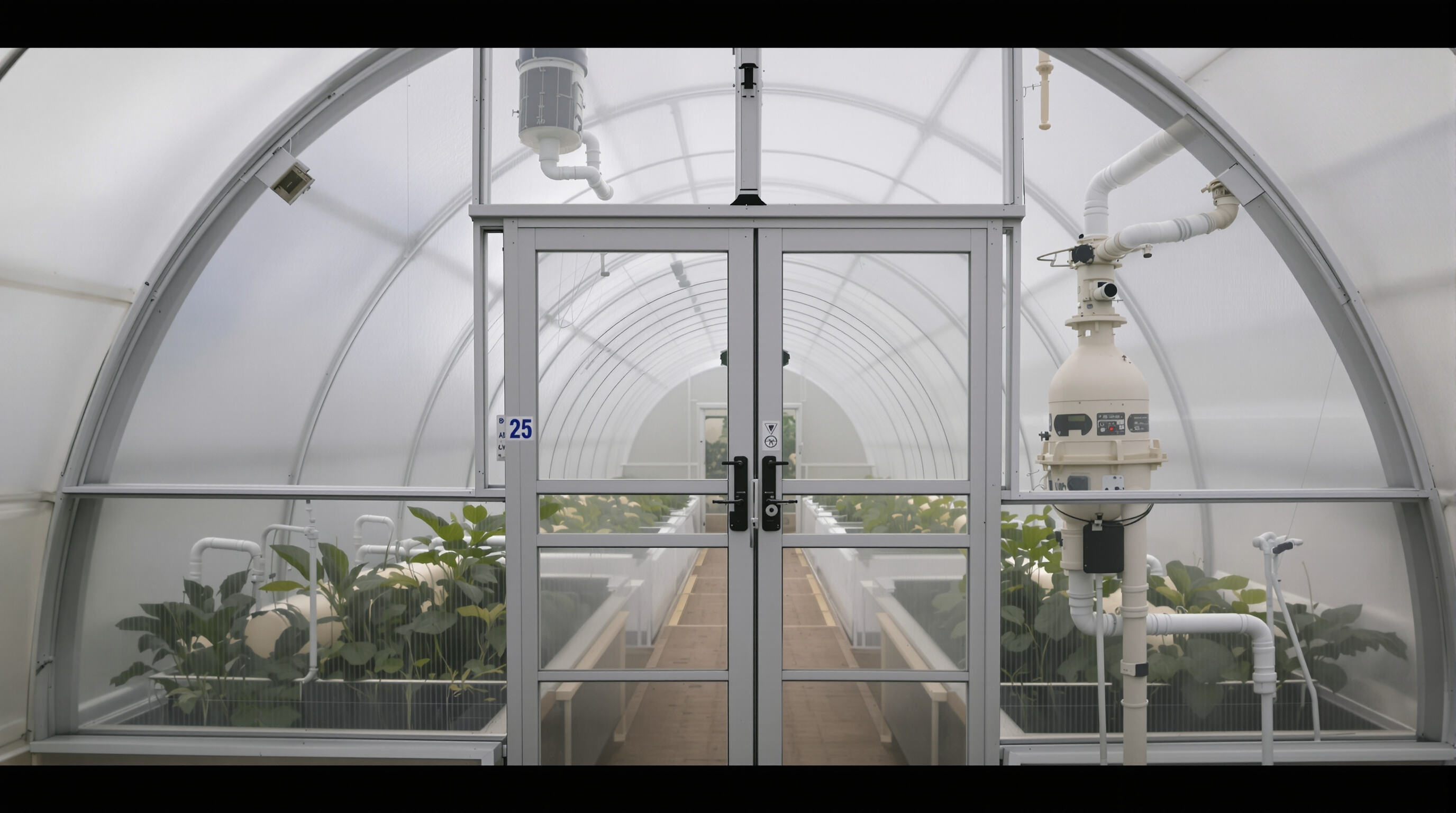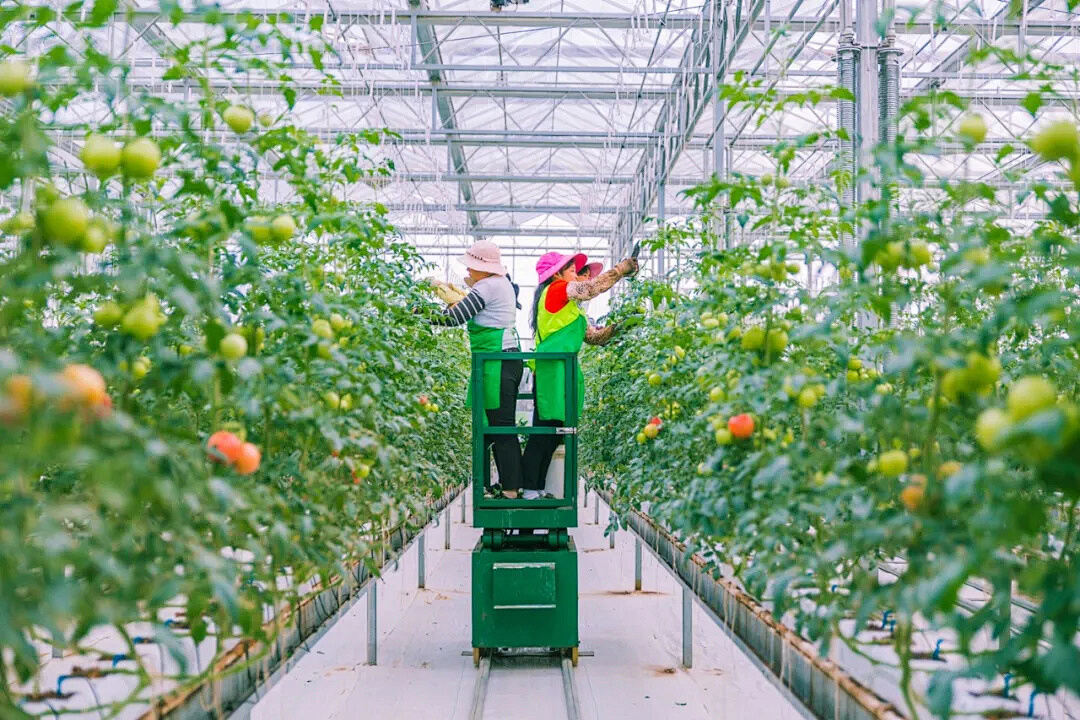Precise Climate Control for Optimal Plant Growth in Green Houses
How green house environments regulate temperature and humidity
Modern green houses use IoT-enabled sensors and automated ventilation systems to maintain temperature within ±1°C of set points and hold humidity between 60–80% for most crops. Real-time data from soil moisture sensors and aerial imaging trigger misting systems or shade curtains, preventing heat stress and moisture loss (IntechOpen, 2023).
Maintaining ideal microclimates for diverse crops year-round
Advanced green houses create distinct growing zones tailored to specific crop needs—orchids thrive at 25°C with 85% humidity, while lettuce prefers cooler 18°C conditions. This zoning allows simultaneous cultivation of over 15 crop varieties without cross-contamination, maximizing land efficiency.
Case Study: Year-round tomato production in Nordic countries using heated green houses
A Norwegian cooperative achieves 12-month tomato harvests by combining geothermal heating—maintaining 22°C even during −30°C winters—with LED supplemental lighting. Their 4-hectare facility produces 8,000 tons annually, tripling the output of traditional seasonal farming while using 40% less energy than conventional heated structures (Nordic AgriReport, 2023).
Trends in automated climate systems: Sensor-based HVAC and smart controls
Leading facilities now integrate predictive AI with environmental controls, enabling HVAC systems to anticipate weather shifts using hyperlocal forecasts. These proactive adjustments reduce energy waste by 25–30% compared to reactive management.
Strategy: Implementing real-time monitoring for stable green house climates
Deploying redundant sensor arrays (three or more per parameter) ensures accurate climate tracking. Farms using this approach report 92% fewer temperature fluctuations and 18% higher crop uniformity, helping meet strict commercial quality standards.
Increased Crop Yields Through Controlled Green House Environments
The link between green house use and higher plant productivity
Controlled environments optimize light, temperature, and CO₂ levels to enhance photosynthesis, boosting productivity by up to 25% compared to open fields—especially for leafy greens and fruiting crops.
Data insight: USDA reports 30–40% higher yields in green house-grown lettuce vs. open field
According to the USDA’s 2023 Agricultural Census, green house-grown lettuce yields 30–40% more per acre than field-grown counterparts. This advantage increases in regions prone to frost, heatwaves, or pests, where enclosed systems prevent weather-related losses.
Strategies to maximize crop density without compromising plant health
- Vertical stacking: Multi-tiered hydroponic setups increase planting density 3–5× while ensuring adequate airflow and light penetration.
- Precision spacing: Automated planting systems dynamically adjust layouts based on growth stage, improving space utilization and plant health.
Balancing yield gains with energy efficiency in green house farming
Energy use per kilogram of produce drops 15–20% in modern green houses through LED retrofits and waste-heat recovery. Combining solar panels with thermal curtains can cut heating costs by 40% without sacrificing yield consistency.
Efficient Use of Water and Nutrients in Green House Systems
Closed-loop irrigation: Reducing water waste in green houses
Recirculating irrigation systems continuously monitor substrate moisture and recycle drainage water, achieving 50–90% greater water efficiency than conventional methods. These closed-loop designs minimize waste while maintaining optimal root zone hydration.
Case Study: Hydroponic green houses in UAE cutting water use by 70%
A 2025 Nature Communications study showed that UAE-based hydroponic green houses reduced agricultural water consumption by 70% using sensor-driven irrigation and nutrient recovery systems. In arid climates, smart climate controls help maintain ideal Vapor Pressure Deficit (VPD) levels, reducing evaporation and enhancing water retention.
Precision nutrient delivery in green house hydroponics vs. traditional soil farming
Automated dosing systems in hydroponic green houses adjust nutrient solutions in real time, reducing fertilizer waste by 40–50% compared to soil farming. Growers achieve precise NPK ratios for each growth phase, resulting in faster maturation—lettuce producers report 30% shorter cycles.
Sustainability benefits of resource-efficient green house agriculture
By integrating closed-loop water systems and precision nutrition, green house operations use resources 5–7 times more efficiently than open-field farming. These practices conserve freshwater and reduce nutrient runoff, a critical improvement given that conventional agriculture accounts for 70% of global water withdrawals (FAO 2025).
Enhanced Pest and Disease Management in Enclosed Green House Settings

Reduced Pesticide Use Through Physical Barriers and Controlled Access
Green houses utilize insect-proof screens and double-door entry systems to block up to 95% of common pests, reducing synthetic pesticide use by 40–60% compared to open-field operations. Sealed environments also support air filtration, effectively excluding airborne pathogens such as powdery mildew, as seen in Dutch rose farms.
Integrated Pest Management (IPM) Strategies in Green House Operations
Modern green houses combine biological controls—like releasing Phytoseiulus persimilis mites to combat spider mites—with environmental adjustments to suppress pest populations sustainably. Research from climate-smart green house systems confirms IPM reduces chemical applications by 50% while increasing beneficial predator populations by 35%.
Managing Risks: Preventing Fungal Outbreaks in High-Humidity Green Houses
Automated humidity control and vertical airflow systems mitigate fungal risks in high-moisture crops like cucumbers. A 2023 study of Korean green houses found fungal infection rates dropped from 22% to 3% after deploying real-time dew-point sensors and directional fans.
Best Practices for Maintaining Hygiene and Biosecurity in Green Houses
Strict sanitation—including tool disinfection, grow media sterilization, and quarantining new plants—prevents 90% of cross-contamination incidents. Staff training on hygiene protocols reduces human-borne pathogen transmission by 65%, as demonstrated in Canadian cannabis green houses.
Extending Growing Seasons and Improving Crop Reliability with Green House Technology
Overcoming seasonal limits: Year-round crop production in green houses
Precision climate control allows green houses to operate year-round, enabling continuous crop cycles regardless of external conditions. By regulating temperature and light, growers can cultivate cold-sensitive crops like basil and bell peppers during winter in temperate zones, transforming seasonal farming into reliable, ongoing production.
Example: Canadian green houses enabling year-round strawberry cultivation
Canadian growers now harvest strawberries in January using heated green houses with LED lighting and CO2 enrichment. According to the 2024 Horticulture Market Report, these operations match summer yields in winter months through root-zone heating, allowing provinces like Ontario to supply fresh berries locally during off-seasons and reduce import dependence.
Economic advantages of continuous harvest cycles in green house agriculture
Year-round production stabilizes supply chains and enables premium pricing during seasonal shortages. USDA analyses show growers using protected agriculture earn 25–35% more annually than seasonal competitors, with added opportunities for contract farming with retailers requiring consistent inventory.
Protection from extreme weather: Building resilient green house structures
Engineered green houses feature impact-resistant glazing and structural reinforcements rated for 120 mph winds. Sloped roofs prevent snow buildup, and automated venting regulates internal pressure during storms, reducing weather-related crop losses by up to 90% compared to open fields (AgriTech Journal, 2023).
Real-world example: Hurricane-resistant green houses in Florida
During Hurricane Ian in 2022, southwest Florida green houses built to Miami-Dade County’s hurricane codes preserved 87% of tomato crops—compared to total losses in exposed fields. Proactive structural investments prevented $2.1 million in damages, underscoring the role of green houses in climate-resilient agriculture (Florida Agriculture Extension Service, 2023).
FAQ
What technology is used in modern green houses to regulate temperature and humidity?
Modern green houses use IoT-enabled sensors and automated systems to maintain temperature and humidity, keeping them at optimal levels for crop growth.
How do zoned growing areas benefit diverse crops in green houses?
Zoned growing areas allow for the cultivation of multiple crop varieties simultaneously by creating specific microclimates tailored to each crop's needs, enhancing efficiency.
What are the advantages of year-round crop production in green houses?
Year-round production enables continuous cultivation, stabilizes supply chains, and allows access to premium pricing during off-seasons.
How do green houses improve water and nutrient efficiency?
Green houses employ closed-loop systems and precision nutrient delivery to maximize water efficiency and reduce fertilizer waste, thus conserving resources.
How do green houses contribute to sustainable pest and disease management?
Green houses use physical barriers, air filtration, and integrated pest management strategies to reduce pesticide use and manage pests and diseases sustainably.
Table of Contents
-
Precise Climate Control for Optimal Plant Growth in Green Houses
- How green house environments regulate temperature and humidity
- Maintaining ideal microclimates for diverse crops year-round
- Case Study: Year-round tomato production in Nordic countries using heated green houses
- Trends in automated climate systems: Sensor-based HVAC and smart controls
- Strategy: Implementing real-time monitoring for stable green house climates
- Increased Crop Yields Through Controlled Green House Environments
- Efficient Use of Water and Nutrients in Green House Systems
- Enhanced Pest and Disease Management in Enclosed Green House Settings
-
Extending Growing Seasons and Improving Crop Reliability with Green House Technology
- Overcoming seasonal limits: Year-round crop production in green houses
- Example: Canadian green houses enabling year-round strawberry cultivation
- Economic advantages of continuous harvest cycles in green house agriculture
- Protection from extreme weather: Building resilient green house structures
- Real-world example: Hurricane-resistant green houses in Florida
-
FAQ
- What technology is used in modern green houses to regulate temperature and humidity?
- How do zoned growing areas benefit diverse crops in green houses?
- What are the advantages of year-round crop production in green houses?
- How do green houses improve water and nutrient efficiency?
- How do green houses contribute to sustainable pest and disease management?


